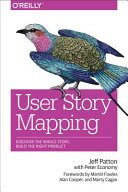

User stories are concise, informal descriptions of a feature told from the perspective of the end user. They serve to capture what the user needs and why. The book emphasizes the importance of user stories as a communication tool among stakeholders, including developers, product owners, and customers. By framing features in terms of user stories, teams can better align their work with user needs, ensuring that the product developed is relevant and valuable. The authors stress the significance of writing user stories in a way that includes the who, what, and why, which allows teams to understand the context and purpose behind each feature. This approach fosters a collaborative environment where all team members can contribute to the product vision, leading to a more user-centered design process.
Continue readingStory mapping is a visual exercise that helps teams prioritize and organize user stories in a way that reflects the user's journey. The book introduces the concept of mapping stories along two axes: the horizontal axis represents the sequence of user activities, while the vertical axis indicates the level of detail or priority of each story. This visual representation allows teams to see the bigger picture of the user's experience and how different stories relate to one another. By engaging in story mapping, teams can identify gaps in their understanding of user needs, spot opportunities for improvement, and prioritize features that deliver the most value. The authors advocate for collaborative story mapping sessions, where cross-functional teams come together to create a shared understanding of the product landscape.
Continue readingOne of the critical challenges in product development is determining which features to build first. The book discusses how story mapping can aid in prioritizing user stories based on their importance to the user experience and business goals. By visualizing the user journey, teams can identify which stories are foundational and which can be deferred to later releases. This prioritization process helps teams focus on delivering a minimum viable product (MVP) that addresses the core needs of users. Additionally, the book emphasizes the importance of iterative release planning, where teams continuously refine their story maps as they gather feedback and learn more about user needs. This approach ensures that the product evolves in alignment with user expectations and market demands.
Continue readingEffective collaboration and communication are essential for successful product development. The authors highlight how story mapping fosters a collaborative culture by bringing together diverse perspectives from different team members. By involving stakeholders in the mapping process, teams can ensure that everyone has a voice in shaping the product vision. The visual nature of story maps also makes it easier to communicate complex ideas and facilitate discussions about priorities and trade-offs. This collaborative environment helps to break down silos between teams, encouraging a shared responsibility for the product's success. The book provides practical tips for facilitating story mapping sessions, including how to manage group dynamics and encourage participation from all team members.
Continue readingAt the heart of the book is the principle of user-centric design, which emphasizes the importance of understanding user needs and behaviors when developing products. The authors argue that story mapping enables teams to empathize with users by visualizing their journey and identifying pain points. By focusing on the user's perspective, teams can create solutions that genuinely address user problems rather than just building features for the sake of it. The book encourages teams to conduct user research and gather feedback throughout the story mapping process, ensuring that the product remains aligned with user expectations. This user-centric approach not only leads to better products but also enhances user satisfaction and engagement.
Continue readingThe book advocates for an iterative approach to product development, where teams continuously refine their understanding of user needs and adjust their story maps accordingly. This iterative process involves regularly revisiting the story map to incorporate feedback from users and stakeholders, ensuring that the product evolves in response to real-world usage. The authors emphasize the importance of establishing feedback loops, where teams can gather insights from users after each release and use that information to inform future iterations. This approach not only leads to more relevant products but also fosters a culture of learning and adaptation within the team. The book provides examples of how organizations have successfully implemented iterative development practices and the positive impact it has had on their products.
Continue readingAs organizations grow and products become more complex, scaling user story mapping becomes essential. The book discusses strategies for adapting story mapping practices to larger teams and projects, ensuring that the core principles remain intact. This includes creating sub-maps for different user segments or product features while maintaining a high-level overview of the entire product landscape. The authors also explore how to engage multiple teams in the story mapping process, fostering collaboration across departments and ensuring alignment on product vision. By scaling story mapping effectively, organizations can maintain a user-centered approach even as they expand, leading to consistent product quality and user satisfaction.
Continue reading